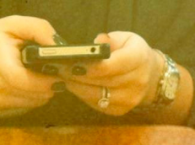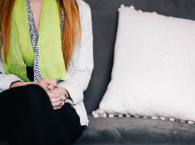One thing that people tend to stress about before an interview is what to wear. I’ve heard a lot of advice saying “you can’t go wrong with a plain black suit” but I actually don’t agree.
While it would be crazy to show up to an Investment Banking interview without that black suit, you’d certainly feel out of place walking into Google or Facebook in a suit where you’ll most certainly be met with a sea of hoodies and more casual gear.
While you should always look polished and professional, your outfit for an interview should mirror the dress code of the office. When in doubt, ask. If you can’t ask, yes, the suit is technically the safest. Below we’ll take a look at a few different dress codes and recommend a corresponding interview outfit.
Business Formal
This means the black suit time is the right call. It is becoming less common to have a business formal dress code, but some industries and companies still have them. Of course, if you are interviewing at a place that has one, you’d follow those guidelines 100%.
Business Casual
The majority of offices fall into this category. Google defines business casual as “relating to or denoting a style of clothing that is less formal than traditional business wear, but is still intended to give a professional and businesslike impression” which is a perfect description.
Basically, look polished and look professional but no suit and tie necessary. While this will differ in fashion and creative industries, I’d suggest staying away from anything too trendy. Think JCrew or Banana Republic versus Urban Outfitters.
If you’re not sure exactly where a company falls on the spectrum you can always choose a simple dress, skirt, or pair of pants with a nice top and then bring a jacket or blazer with you in case people are dressed more formally when you arrive. This will give you a chance to gauge the environment when you walk in and make a split decision.
Casual
If a company has a casual dress code (common in startups and tech companies) it means things are pretty flexible but remember, it’s still an interview. Even if there is a casual dress code, avoid anything ripped, too short, too tight, too revealing, or too trendy.
It is always better to play it safe. You may want to err on the side of business casual even in a casual environment. You don’t have the job yet and it’s better not to take too many liberties.
Some other good tips for interview dressing (more on this topic here):
- keep the accessories simple & not distracting
- avoid excessive jewelry (i.e. don’t get decked out)
- hair should be manageable and not “messy” – you don’t want to be fidgeting with it throughout the interview
- think about your environment before you wear your most expensive watch, name brand bag, etc. (not saying don’t do it in the right environment, but it definitely does send a message)
If you’re unsure of what to wear to an interview, it is ok to ask the person scheduling with you what the office dress code is. Even better, if you have a friend who works (or has worked) at the company or similar companies, grill them a bit on what is standard.
However, what you are trying to do is walk through that door and already look like you work there. And there is no one size fits all approach to that.





